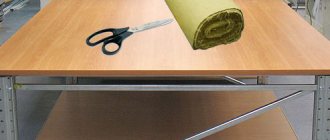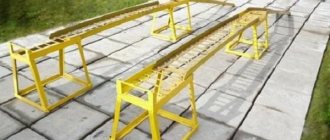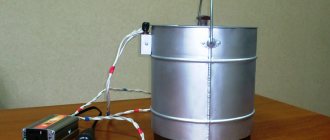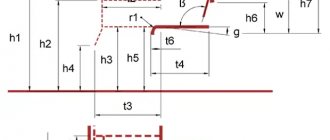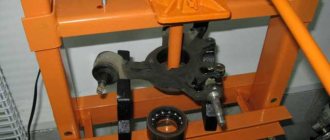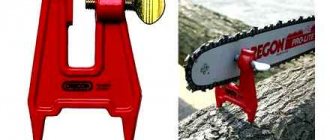It’s probably not worth talking about how popular quadcopters are now. And you most likely know how much they cost and have already stopped thinking about it. In our article you will learn how to make a quadcopter with your own hands at home. We warn you right away that this is a responsible and difficult task, but in the end you will have invaluable experience and a treasured device at a ridiculous price.
There are several ways to assemble a quadcopter yourself:
- All inclusive package.
Ideal for those who want to save money on purchasing a finished product, but also do not want to understand all the nuances of its assembly. This is a package with parts pre-configured by the manufacturer. All you have to do is read the instructions and assemble the quadcopter using it. - Always Ready to Fly Kit.
“Almost ready to fly” costs less, but the assembly process is noticeably more complicated. The kit may not be complete (depending on price and quality), and you will also have to configure the product yourself, which not everyone can do. But if you already have some experience in this area, then it’s worth a try. - Make a quadcopter yourself.
Not suitable for everyone. But if you have experience, even if it’s small, go for it. In addition, this will be a source of pride for you - a quadcopter created with your own hands. The difficulty is that you have to select, configure and fit yourself. - Use available materials.
No less difficult, but real. Parts from aliexpress, improvised electronics - no one said it would be easy. On the other hand, everything you need, including diagrams and drawings, is easily found on the Internet.
Assembly instructions
Surely, you read this article and took a frame with a distribution board. But if you haven’t done this, it doesn’t matter, just connect the wires to the control module.
Let's take, for example, a copter assembled from the following components:
- Base (frame) –
Diatone Q450 Quad 450 V3 PCB Quadcopter Frame Kit 450 - 4
DYS D2822-14 1450KV Brushless Motors. - Speed controller
DYS 30A 2-4S Brushless Speed Controller ESC Simonk Firmware - Propellers DYS E-Prop 8×6 8060 SF ABS Slow Fly Propeller Blade For RC Airplane
- Control module
1.5 kk21evo - Battery, type: lithium polymer –
Turnigy nano-tech 2200mah 4S ~90C Lipo Pack - Charger
Hobby King Variable6S 50W 5A - Battery Connector
XT60 Male Plug 12AWG 10cm With Wire - Connectors
20 Pairs 3.5mm Bullet Connector Banana Plug For RC Battery/Motor - Remote control Spektrum DX6 V2 with AR610 Receiver (with receiver and transmitter)
All this will cost about 20 thousand rubles
Options
Before you start, it’s worth remembering - what are the ways to get your own quadcopter? There are actually five of them.
RTF
RTF (ready to fly) – Just buy a ready-made copter. All you have to do is take it out of the box and launch it into flight. This is a good option if you are not interested in these designers and just want to satisfy your need for a UAV. However, it's not nearly as fun as the remaining options.
All inclusive package
This kit is suitable for those who want to make a drone with their own hands, but are not going to spend hours understanding documentation, calculators and other intricacies. Everything there is calculated and adjusted by the manufacturer in the same way. You just need to assemble and configure. If you are now choosing your first quadcopter, then this is definitely your choice.
ARF kit
ARF (Almost Ready to Fly) – This is a little more complicated. There are different degrees of “readiness”. In some places you need to buy an additional controller, and in others only the copter frame is included in the kit. You will have to assemble the quadcopter, configure and calibrate it yourself. An option for those who want to delve deeper into the topic and dig deeper into their UAV.
From scratch
This is the choice of advanced users. Building a copter from scratch means independently selecting the optimal components, developing and manufacturing the frame, and so on. This is a difficult but very interesting path, especially if you do not take a ready-made control module, but try to use Arduino or raspberry pi.
From scrap materials
We are not looking for easy ways. Grandfather's garage, aliexpress and electronics trash are our choices. A path of pain, PVC pipes and hardcore, but as a result you will get a completely homemade quadcopter. There is complete scope for imagination, and all the necessary components and drawings of quadcopters can be found on the Internet.
Quadcopter assembly steps
Let's lay all this stuff out on the table and get started.
- We roughly estimate the required length of the controller wires, add a small margin just in case, and cut them to the required length.
- We solder the connectors to the outputs of the regulators to simplify connecting the motors.
- Solder the speed controllers to the wiring board.
- We also solder the battery connector to the wiring board.
- Carefully screw the motors onto the drone's arms. When installing, take care of the thread.
- Solder the motor connectors if there are none.
- We screw the beams with motors to the board.
- We attach the regulators to the copter's beams. The most convenient way to do this is with plastic clamps.
- We connect the wires of the regulators to the engines in a random order. If necessary, we will change the order later.
- We attach the control module to the case (after photographing the back side, then you will understand why). We can even attach it with chewing gum, but I recommend using soft double-sided adhesive tape first.
- We connect the speed controllers to the controller. As a rule, we connect the white wire to the screen to the ports marked with “plus” - “minus” - “empty” signs.
- Use the remaining adhesive tape to secure the receiver closer to the control unit, and connect the necessary channels to the appropriate ports. We use the documentation for this receiver and a photo of the outer edge of the board in order to understand which stack of wires is responsible for what.
- We connect power to the device from the battery through the connector.
- You are well done! You've built your first drone.
Where to start
The first thing a beginner who has decided to make a quadcopter with his own hands should understand is that it will not be possible to do without purchasing special components. A flying four-rotor machine is a fairly complex computerized system. Therefore, purchasing a special control board, the signals from which will stabilize and guide the multicopter, is mandatory.
A few tips will help you assemble a drone with a high chance of a positive result.
- You shouldn't make your homemade quadcopter big. It's smart to start with a model that's reliable, stable, and durable.
- Motors for a drone need to be chosen with reserve. Firstly, this achieves greater freedom when assembling the frame. Powerful motors compensate for errors caused by insufficient lifting capacity. Secondly, the characteristics of most Chinese-made engines are overestimated.
- The minimum amount of wiring and connections will both reduce the weight that a homemade drone will have and minimize interference and resistance losses.
And most importantly, you shouldn’t try to make a quadcopter with a camera right away. This device (if you want to get a high-quality image) is not only bulky and quite heavy, but will also inevitably unbalance the drone.
Installation and configuration of equipment
Now all you have to do is set it up so that it doesn’t crash on the first day of flight.
- We start the engines (anything can happen here, study the documentation)
- Add gas and see in which direction the propellers spin. They must rotate as written in the diagram that comes with the controller. Otherwise, control will be inverted. If something goes wrong, we turn over the connector that connects the engine and controller.
- If everything turns correctly, screw the upper part of the frame. Don't try to push it into place. If it stands up tightly, something is going wrong. We loosen the lower screws, then tighten everything gradually.
- We fix the block with batteries.
- We mount adapters for propellers on engines.
- We install the propellers, taking into account the direction of rotation of the motors. The raised element of the blade must face in the direction of rotation.
- Eat! Your quadcopter is ready for its first flight.
We looked at a simple example of assembling a quadcopter , which does not require much expense or effort in terms of assembly. Accordingly, if you decide to lift something heavier on a drone (navigator, heavier filming equipment, etc.), the design will have to be modified and strengthened. However, you have already gained your first experience in assembling such structures. Then it will be easier for you to understand the principle of operation of the copter and know how to further refine it.
Scope of application
A quadrocopter can also be used for serious purposes. Equipped with a video camera and transmitter, it can transmit aerial images of tracked objects. For example, the location of livestock in a pasture or the condition of roofs and high monuments.
It has the power to scout out ice or rafting jams in rivers and transmit information about traffic jams and traffic conditions. The quadcopter is also used during forest fires, giving an overview of the direction of fire movement. In general, wherever there is a need to obtain a panoramic image from a height, he is the first assistant. Including the areas of life saving and searching for people.
Another obvious method of using a drone is to carry any cargo through the air. The aircraft is not afraid of bad roads or their complete absence, and remote control allows it to be used in any weather without risking the life of the pilot.
Quadcopter with cargo
There are also non-obvious ways to use quadcopters. For example, in some large shopping centers, aircraft of this type replace lighting lamps under the ceiling. The capture is carried out in a special holder, after which the drone rotates, unscrewing the lamp, and transports it to the ground. A whole lamp is installed in it, which moves back through the air with the device and is screwed in. As a result, there is no risk for personnel, and the work is completed.
Safety
All beginners, when thinking about safety, remember the AR.Drone and its propeller protection. This is a good option, and it works, but only on small and light devices, and when the weight of your copter begins to approach two kilograms or has long exceeded this figure, then only a strong iron structure can save you, which will weigh a lot and, like you you see, it will greatly reduce the load capacity and flight autonomy.
Therefore, it is better to first train away from people and property that can be damaged, and as your skills improve, protection will no longer be needed. But even if you are an experienced pilot, do not forget about safety precautions and think through the possible negative consequences of your flight in emergency situations, especially when flying in crowded places.
Do not forget that a failure of the controller or communication channel can lead to the device flying far away from you, and then a GPS tracker installed in advance on the copter, or a simple but very loud beeper, by the sound of which you you can determine its location. Set up and check in advance the fail safe function of your flight controller, which will help you land or return the copter to the starting point if the signal from the remote control is lost.
Frame number two
In advertising structures, cheap, lightweight, durable and easy-to-process composite material is widely used in the form of a plastic sheet coated on both sides with aluminum foil and colored film. For our copter we used 3mm thick black sheet with 0.3mm foil on each side. Cutting of such material can be easily ordered from any company engaged in advertising structures. We ordered cutting from Remex-Ural. The first frame was more of a trial frame. It turned out to be too massive and too heavy:
First composite panel frame
We remade it without even starting to assemble it. In the second version of the aluminum panel frame, we reduced the dimensions, increased the number of holes and added stiffening ribs. I must say that all you need to order is to prepare a file with cut contours in cdr format. There are two types of cuts - through or V-shaped. A V-cut involves cutting through the plastic in such a way that it can then be easily bent by hand at an angle of 90 degrees. All this is cut out on a CNC machine with a 3mm diameter cutter. The minimum hole diameter is 3.2mm. This is the cutting project we ended up with:
Quadcopter frame project
The manufacturing cost was about 1200 rubles. We reinforced this frame with a 10x10mm square aluminum profile, which was secured with rivets.
Composite frame assembly
To improve the quality of the accelerometer readings of the flight controller, it makes sense to isolate it from vibration. We made the platform for the flight controller as a separate assembly connected to the battery. The result was a massive part vibration-isolated from the main frame. The battery is velcroed to the bottom of this assembly. The top part is the power distribution board. Later we added a silicone gasket that we cut from a hot pad. It prevents the battery from slipping out of the mount.
Flight controller and battery holder
Particular attention should be paid to the struts on which your aircraft will land. Initially, we used clamps that secure sewer pipes to the walls, but they broke during the first “hard” landing:
Broken pipe clamp
Therefore, we inserted sections of pipe into clamps and sealed them with hot glue.
Landing stand
The assembled frame of the quadcopter with the backlight turned on looks quite impressive:
Quadcopter frame with backlight
The advantages of the resulting structure include its strength, accuracy of parts placement, symmetry, excellent weight distribution and good vibration isolation. But its main drawback negates everything! Weighing 1550 grams, with a 3000mAh battery, this copter flew for about three minutes! The copter with such a frame looked great, but it was almost impossible to fly, so we decided to build a third version.
info
To fly with a camera, get a gimbal that will keep the camera parallel to the horizon during maneuvers and also help control the camera's tilt.
Most controllers have outputs for stabilizing servo-driven gimbals, as well as an output for a camera shutter button control switch. The kit usually consists of the remote control itself and the receiver. The receiver contains control knobs and additional buttons. Typically, Mode2 equipment is selected, when the left stick controls the gas and rotation, and the right stick controls the tilt of the copter. All handles, except the gas, are spring-loaded and return to their original position when released.
It is also worth paying attention to the number of channels. The drone will require four control channels and one channel for switching flight modes, and additional channels may also be required for camera control, for configuration, or for special flight controller modes. When choosing a remote control, you should also consider the possibility of changing the radio module so that it can be easily updated in the future.
Safety
All beginners, when thinking about safety, remember the AR.Drone and its propeller protection. This is a good option, and it works, but only on small and light devices, and when the weight of your copter begins to approach two kilograms or has long exceeded this figure, then only a strong iron structure can save you, which will weigh a lot and, like you you see, it will greatly reduce the load capacity and flight autonomy. Therefore, it is better to first train away from people and property that can be damaged, and as your skills improve, protection will no longer be needed. But even if you are an experienced pilot, do not forget about safety precautions and think through the possible negative consequences of your flight in emergency situations, especially when flying in crowded places. Do not forget that a failure of the controller or communication channel can lead to the device flying far away from you, and then a GPS tracker installed in advance on the copter, or a simple but very loud beeper, by the sound of which you you can determine its location. Set up and check in advance the fail safe function of your flight controller, which will help you land or return the copter to the starting point if the signal from the remote control is lost.

